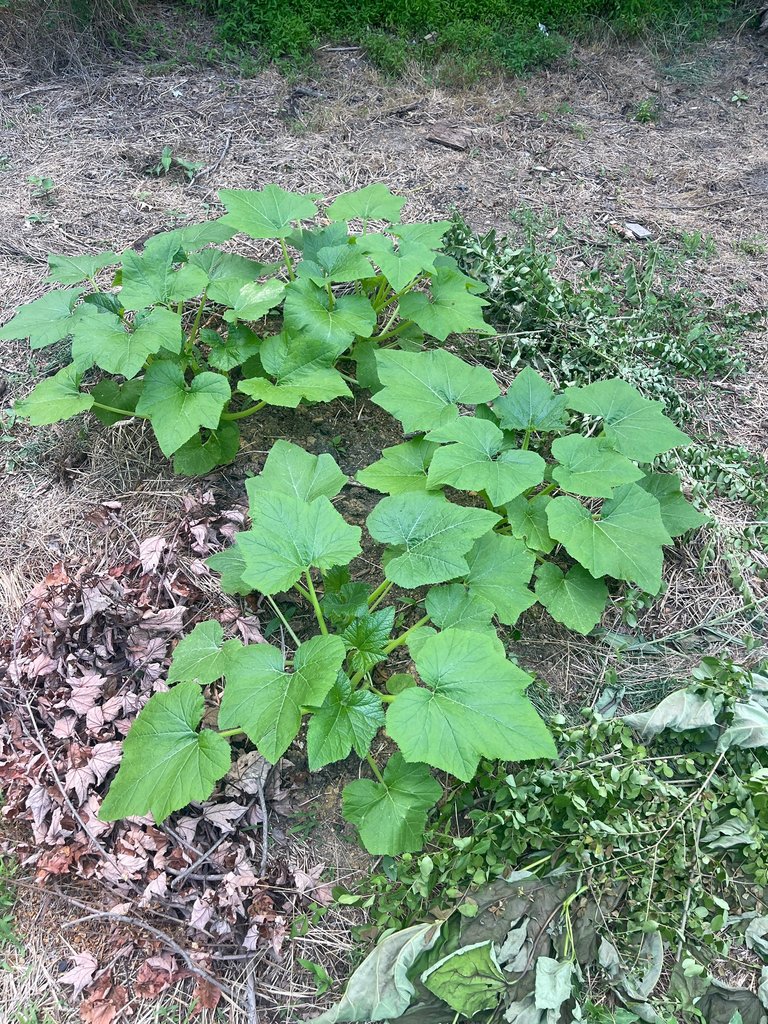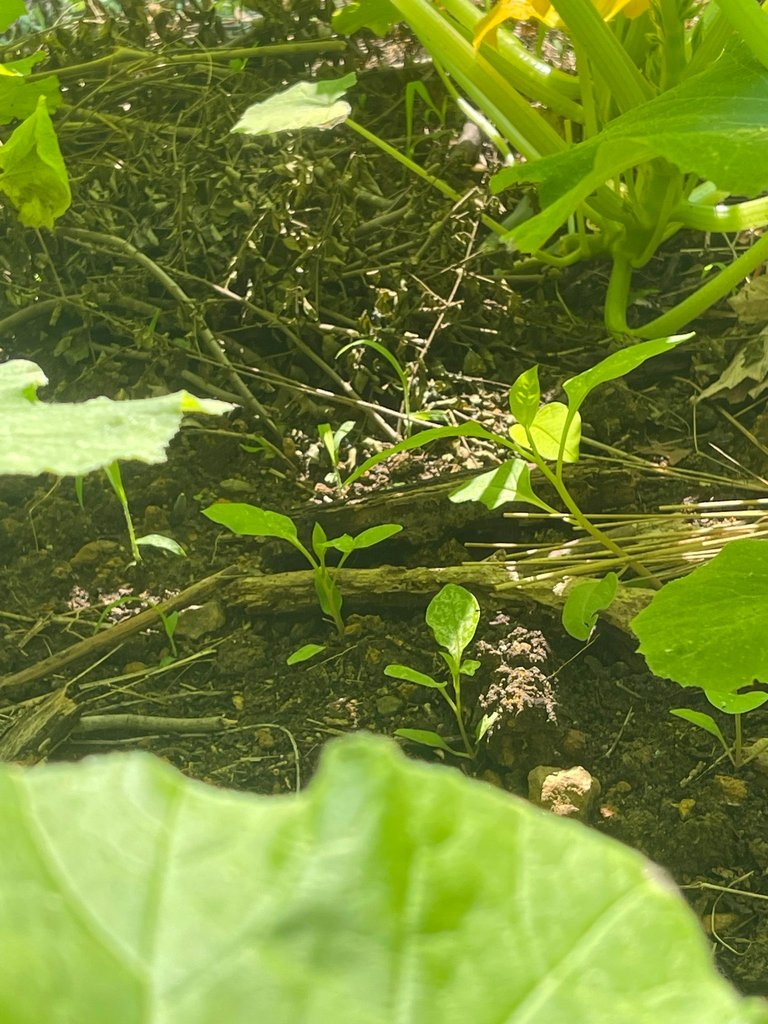Hügelkultur, like a hug for your plants' roots
In the spring of 2023 I built a hügelkultur bed using some rotting logs that had been piled up around the homestead. Our soil here is 4 to 8 inches of sandy loam over a heavy red clay. I dug down two feet placed in the wood mass then add the soil back in.

I planted four squash plants at the beginning of May, and this is how they looked on May 21. No fertilizer was added, but I periodically do some cut and drop weeding around the base of the bed. The bed has substantially settled from two years, ago.

Fast forward to today and the four squash plants have created a dense canopy of foliage. I let this particular garden get unruly on the edges. Behind the squash is a patch of potatos that need hilling, and some zucchini in a raised bed. The raised bed does need a bit of tending, but zucchini isn't a priority at the moment. When it starts coming in strong I'll likely be feeding most of it to the chickens.

Getting closer to ground level the squash plants are thoroughly shading out the ground underneath. There is a weed or two that I will snip near the ground periodically, but I've never found that a few weeds bother squash or melons substantially. The best cantaloupe that I ever grew came from a patch where grasses and weeds had completely cover the ground near the cantaloupe vines. Some of the things we do in the garden are often more for aesthetics than what actually governs the productivity of the plants.

The squash is setting well, and I'll probably be picking a few within the week. Squash and cucumbers for that matter, can go from tiny to ready for the kitchen seemingly overnight. I enjoy squash picked on the smaller side, when left to go longer squash can become a bit more fibrous. When I put up this bed for the winter I will likely add some wood ash and pile up leaves and garden residues to slowly decompose over winter. I could potentially do oats here after the squash finish for some more biomass and to add some nitrogen for the spring.





